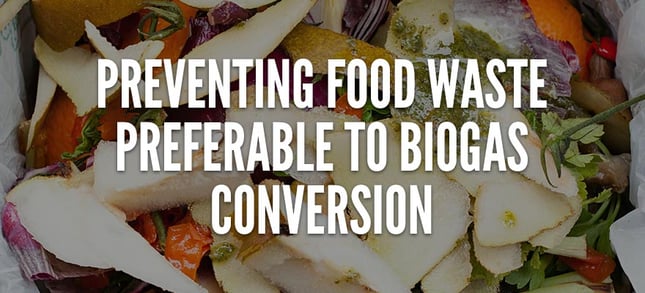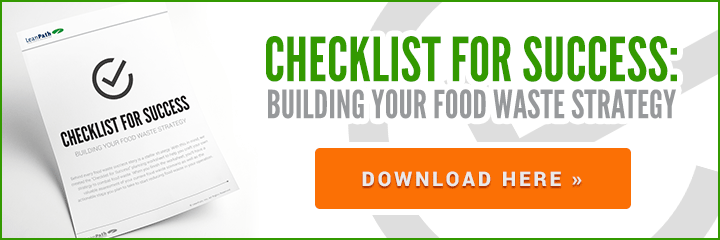Food Waste Intelligence
Subscribe to Food Waste Intelligence
Get our latest posts delivered right to your inbox.
Preventing Food Waste is Preferable to Biogas Conversion, Study Says

Just last month the Norwegian University of Science and Technology released a study that compared the impact of collecting food waste to convert it to biogas (recycling) versus cutting food waste (prevention). A growing number of waste management plants in both the United States and Europe are processing food waste into biogas, which significantly reduces CO2 emissions when it replaces fossil fuels. But is this process a good long-term solution for the environment?
This study reminds us of a simple fact: It takes more energy to collect and process food waste than it would if people didn’t throw it away in the first place.
Sounds obvious, yet food waste prevention is often overlooked, in our society as a whole and also within foodservice operations that we work with here at LeanPath. This study suggests that prevention is overlooked and food recycling gets more of the attention in Norway for two reasons: because there’s no clear goal at the national level, and because society values marketable goods, such as biogas.
The study separated food waste into two groups: avoidable food waste (food that should have been eaten), and unavoidable food waste (bones, shells, peels). In the consumer sector, much of the food waste was driven by date label confusion, something that’s getting a lot of attention in the U.S. (see the Expired film from Harvard's Food Law and Policy Clinic).
In the foodservice industry, we come across this quite often in our work at LeanPath, where we find that operations go straight to solutions to recycle or divert food waste from the landfill, before they’ve examined the source of the food waste problem. On average, 50 percent or more of the food wastage that’s occurring in kitchens is avoidable waste.
This report reminds us to focus on prevention first, for the greatest environmental and financial impact, and then look at ways to keep the unavoidable food waste out of the landfill.
Interested in tools to help build your organization’s food waste strategy? Check out the LeanPath webinar and companion checklist: "10 Steps to Building a 2016 Food Waste Strategy."
